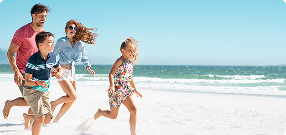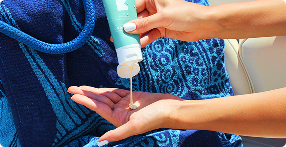- All Destinations
- Caribbean
- Antigua
- Aruba
- Bahamas
- Barbados
- Cancun
- Cuba
- Dominican Republic
- Grenada
- Jamaica
- Mexico
- St Kitts and Nevis
- St Lucia
- St Vincent and the Grenadines
- Tobago
- Turks and Caicos
- Caribbean Multicentres
- Caribbean Cruises
- Morocco
- Casablanca
- Marrakesh
- Agadir
- Singapore
- Middle East
- Abu Dhabi
- Ajman
- Bahrain
- Dubai
- Dubai Multicentres
- Egypt
- Fujairah
- Jordan
- Middle East Cruises
- Oman
- Qatar
- Ras Al Khaimah
- Saadiyat Island
- Saudi Arabia
- Malaysia
- Borneo
- Kuala Lumpur
- Langkawi
- Pangkor Laut
- Penang
- Malaysia Multicentres
- Hong Kong
- Thailand
- Bangkok
- Hua Hin & Cha Am
- Khao Lak
- Koh Samui
- Krabi
- Pattaya
- Phi Phi
- Phuket
- Chiang Mai
- Thailand Multicentres
- Thailand Islands
- Koh Lanta
- Far East Cruises
- South Africa
- Cape Town
- Kruger National Park
- Garden Route
- Eastern Cape
- South Africa Tours
- Cape Verde
- Europe
- Spain
- Greece
- Cyprus
- Portugal
- Croatia
- Italy
- Turkey
- Malta
- Europe Multicentres
- European Cruises
- Indian Ocean
- Maldives
- Mauritius
- Seychelles
- Sri Lanka
- Zanzibar
- Indian Ocean Multicentres
- Goa
- Indonesia
- Bali
- Bali Multicentres
- Vietnam
- Nha Trang
- Hoi An
- Hue
- Danang
- Phan Thiet
- Hanoi
- Ho Chi Minh
- Vietnam Multicentres
- Cambodia
- Phnom Penh
- Siem Reap
- USA
- Orlando
- New York
- Las Vegas
- USA Multicentres
- USA Cruises
- Japan
- Japan Multicentres
- Deals
- Cruise
- Manage Bookings
- Home
-
Destinations
- All Destinations
-
Caribbean
- Antigua
- Aruba
- Bahamas
- Barbados
- Cancun
- Cuba
- Dominican Republic
- Grenada
- Jamaica
- Mexico
- St Kitts and Nevis
- St Lucia
- St Vincent and the Grenadines
- Tobago
- Turks and Caicos
- Caribbean Multicentres
- Caribbean Cruises
-
Morocco
- Casablanca
- Marrakesh
- Agadir
- Singapore
-
Middle East
- Abu Dhabi
- Ajman
- Bahrain
- Dubai
- Dubai Multicentres
- Egypt
- Fujairah
- Jordan
- Middle East Cruises
- Oman
- Qatar
- Ras Al Khaimah
- Saadiyat Island
- Saudi Arabia
-
Malaysia
- Borneo
- Kuala Lumpur
- Langkawi
- Pangkor Laut
- Penang
- Malaysia Multicentres
- Hong Kong
-
Thailand
- Bangkok
- Hua Hin & Cha Am
- Khao Lak
- Koh Samui
- Krabi
- Pattaya
- Phi Phi
- Phuket
- Chiang Mai
- Thailand Multicentres
- Thailand Islands
- Koh Lanta
- Far East Cruises
-
South Africa
- Cape Town
- Kruger National Park
- Garden Route
- Eastern Cape
- South Africa Tours
- Cape Verde
-
Europe
- Spain
- Greece
- Cyprus
- Portugal
- Croatia
- Italy
- Turkey
- Malta
- Europe Multicentres
- European Cruises
-
Indian Ocean
- Maldives
- Mauritius
- Seychelles
- Sri Lanka
- Zanzibar
- Indian Ocean Multicentres
- Goa
-
Indonesia
- Bali
- Bali Multicentres
-
Vietnam
- Nha Trang
- Hoi An
- Hue
- Danang
- Phan Thiet
- Hanoi
- Ho Chi Minh
- Vietnam Multicentres
-
Cambodia
- Phnom Penh
- Siem Reap
-
USA
- Orlando
- New York
- Las Vegas
- USA Multicentres
- USA Cruises
-
Japan
- Japan Multicentres
- Deals
- Cruise
- Manage Bookings
- My Account

For After Sales please contact:
Click for Customer ServiceOpening Hours
Please note that bank holiday hours may vary and might not align with these standard timings.

Sunscreen Decoded: Your no-fuss guide to staying safe in the sun
This summer, Destination2 has teamed up with leading UK skin cancer charity, Melanoma Focus to help families stay safe in the sun. With many of our customers travelling with children, often to sun-soaked destinations like the Maldives, Thailand and Dubai - we believe it’s our responsibility to help families stay protected from harmful sun exposure.
Our new research shows that two-thirds of parents don’t fully understand sunscreen labels - from SPF numbers to the difference between UVA and UVB. This confusion can lead to sunburn and long-term skin damage. That’s why we’ve created a jargon-busting Sunscreen Decoded Tool to explain what it all really means.
How well do you really know your sunscreen?
Put your knowledge to the test with our fun quiz now!
Put your knowledge to the test with our fun quiz now!
Confused by sunscreen labels? You’re not alone.
Two-thirds of parents say they don’t understand them - so we’ve teamed up with the experts at Melanoma Focus to break it all down. Here’s what you really need to know to keep your family safe this summer:
Top tips for applying sunscreen:
- Apply sunscreen to exposed sites 15-30 minutes before going out in the sun.
- Gently smooth sunscreen over your skin in an even layer - don’t rub it in. Let it sit on the surface and absorb naturally.
- Reapply every 2 hours or after an activity that could remove the sun cream, such as swimming or exercise.

What does SPF mean?
SPF = Sun Protection Factor
SPF stands for Sun Protection Factor and tells you how long sunscreen can protect your skin from burning.
For example, if you burn in 10 minutes, SPF 30 could protect you for up to 300 minutes. But in real life, things like swimming and sweating reduce that time. That’s why you should reapply sunscreen every 2 hours.
UVA vs UBV, what’s the difference?
UVA = Mainly ages the skin
UVB = Mainly burns the skin
Both UVA and UVB damage the DNA in skin cells, leading to genetic defects and mutations which can cause skin cancer. Damage from UV exposure increases your risk of skin cancer over time.

What does “broad spectrum” mean?
Broad spectrum sunscreens protect you from both UVA and UVB rays – helping prevent sunburn and long-term skin damage.
In the UK, there should be an SPF and also a star rating from 1 to 5, which gives an indication of protection against UVA rays. The higher the number of stars, the more balanced your protection will be. You should look for a sunscreen with SPF 30+ and a 4 or 5 UVA star rating.
What is the UV Index?
It measures UV strength
The higher the number, the stronger the sun’s rays – and the faster you’ll burn. Even on cloudy days, high UV can be harmful. You should wear sunscreen if the UV index is 3 or above.
What about babies under 6 months?
Keep them out of the sun
Their skin is too sensitive for sunscreen. Instead, use shade, wide-brim hats and loose, cool clothing.
For babies over 6 months and young children, use kid-friendly sunscreen that’s high SPF and fragrance-free. Look for roll-ons, sprays or coloured creams to make application easier, and more fun!

How much sunscreen should you apply?
Use a full shot glass full!
Experts recommend a shot glass full for your entire body. Or, think of it as a teaspoon for each arm, leg, your front, back and face.
How often should you reapply?
Every two hours - or sooner
Make sure you reapply every two hours or after an activity that could remove sun cream, such as swimming or excessive sweating.
Do sunscreens expire?
Yes - check the open jar icon
The open jar label shows how many months your sunscreen will last after opening. Heat and sun exposure can shorten shelf life too, so don’t rely on that bottle from last summer.
Sign up to receive our top deals, competitions, and travel inspiration from the experts.
Too busy to talk? Researching your next adventure? Need a travel expert's perspective?

Important Information
View our Privacy Policy.
Looking for our site?
We noticed you're visiting from . Would you like to visit our site for local prices and offers?
You can always change regions from the footer menu